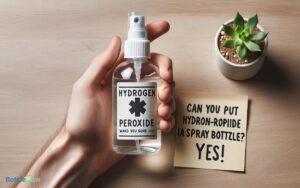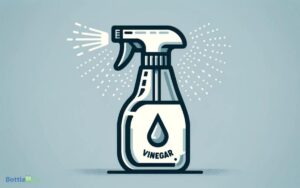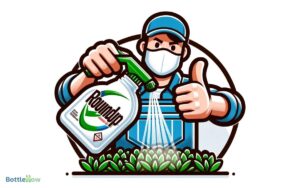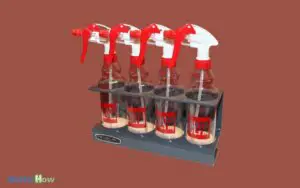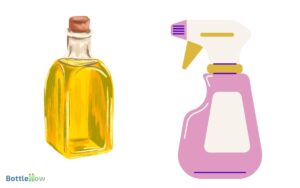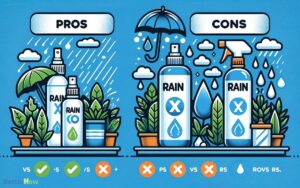Can You Use a Spray Bottle to Mist Plants? Yes!
Yes, you can use a spray bottle to mist your plants. Misting helps increase the humidity around your plants, which is essential for their photosynthetic efficiency and overall nutrient absorption.
Especially for tropical species, daily misting creates a favorable microclimate. However, be cautious with the water quality; tap water often contains chlorine and minerals that could harm plant foliage or leave undesirable deposits. It’s best to use distilled or rainwater.
Also, tailor your misting frequency based on the specific humidity needs of your plants and the environmental conditions. Understanding these nuances could greatly enhance your plants’ health and vitality.
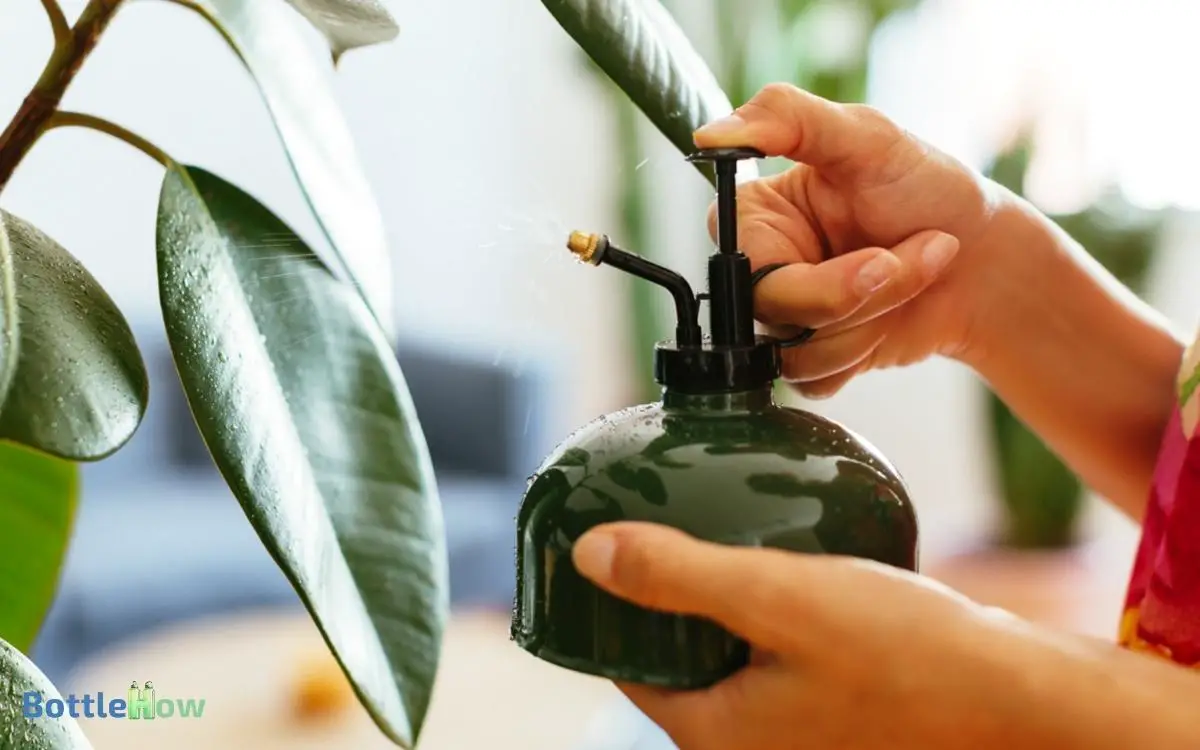
Key Takeaways
Benefits of Misting Plants
Why should you consider misting your plants? Misting can greatly increase humidity around your plants, mimicking their natural tropical environments and facilitating improved photosynthetic efficiency and nutrient absorption.
When you mist, you’re basically providing your plants with a microclimate more conducive to their growth. This practice can lead to more vibrant, robust foliage.
Additionally, misting can help in reducing the dust on plant leaves, ensuring they’re more efficient at absorbing light and undergoing photosynthesis.
By using a simple spray bottle, you can directly control the amount and frequency of water your plants receive, tailoring the environment to their specific needs. This method is especially useful for plants that thrive in higher moisture levels, as it helps prevent under- or overwatering. A spray bottle for humidity allows you to gently mist the leaves, creating a more consistent and controlled environment. Regular misting can also reduce dust buildup on foliage, promoting healthier growth.
This act of care not only benefits your plants but also enhances your understanding and connection with the natural world.
Understanding Humidity Needs
To effectively cater to your plants’ growth, it’s important to understand their specific humidity requirements, which vary greatly across different species.
Here’s a quick breakdown to guide you:
- Tropical Plants: Typically require high humidity, around 60-80%. Frequent misting helps mimic their natural environment.
- Desert Plants: Such as cacti and succulents, thrive in lower humidity, generally 10-30%. Sparse misting is adequate.
- Temperate Plants: Need moderate humidity levels, about 40-60%. Misting several times a week can suffice.
- Ferns and Orchids: These plants love high humidity and benefit from daily misting to maintain moisture around their foliage.
Understanding these needs allows you to serve your plants better, promoting their health and vitality efficiently.
The Role of Water Type
You’ll find that not all water is created equal when it comes to plant misting. Tap water can contain minerals and chlorine which mightn’t be ideal for some sensitive plants.
On the other hand, using filtered water can enhance plant health by removing harmful contaminants and providing a more consistent water quality.
Tap Water Suitability
Have you considered whether tap water is suitable for misting your plants, given its varied mineral content and potential chemical treatments?
Here’s what to watch out for:
- Chlorine Levels: Common in municipal water, chlorine can harm plant foliage. It evaporates when left to sit, so consider letting water stand before use.
- Hardness: Water with high calcium or magnesium can leave deposits on leaves, potentially blocking sunlight and reducing photosynthesis.
- pH Levels: Most plants prefer a slightly acidic environment. Tap water often leans towards alkaline, which might affect nutrient uptake.
- Salts: Excessive salts can build up in the soil, hindering water absorption and root growth.
Understanding these factors helps make sure that your plant care is both effective and nurturing.
Filtered Water Benefits
Switching to filtered water can greatly enhance your plant misting routine by removing harmful chemicals and reducing mineral deposits.
When you use unfiltered tap water, it often contains chlorine and fluorides that, while safe for human consumption, can accumulate in the soil and potentially harm plant roots.
Filtered water, on the other hand, strips away many of these additives and results in a purer water source that’s gentler on your plants.
Moreover, filtered water typically has fewer dissolved minerals such as calcium and magnesium, which can lead to unsightly deposits on leaves and clog your spray bottle’s nozzle over time.
By using filtered water, you’re ensuring that the mist you apply is as beneficial as possible, promoting healthier growth and appearance.
Frequency of Misting
As you consider how often to mist your plants, it’s important to recognize that the ideal misting schedule can vary greatly depending on the type of plant you’re nurturing.
Different species have diverse humidity requirements and respond uniquely to water frequency, which means you must tailor your approach.
Additionally, environmental factors such as temperature, light exposure, and air circulation play pivotal roles in determining the frequency of misting needed to maintain ideal plant health.
Ideal Misting Schedule
Determining the ideal misting schedule for your plants depends on factors such as humidity, plant species, and environmental conditions.
To optimize plant health and guarantee effective hydration, consider these practical guidelines:
- Measure Indoor Humidity: Regularly check your indoor humidity levels. Aim for 40-60% for most houseplants.
- Observe Soil Moisture: Before misting, check if the soil is dry. Over-misting can lead to fungal infections.
- Assess Environmental Changes: Adjust your misting frequency based on seasonal changes in temperature and light.
- Monitor Plant Response: Look for signs of improvement or distress in your plants to tailor the misting schedule appropriately.
Plant Type Variability
Different plant species require varied misting frequencies to thrive, reflecting their unique adaptations to natural habitats.
For instance, tropical plants like ferns and orchids flourish with daily misting, as it simulates the moist, humid air of their native environments.
In contrast, succulents and cacti, accustomed to arid conditions, rarely need misting and can suffer from too frequent water application. It’s important you assess the specific humidity needs of your plants, as misting can greatly impact their health and growth.
Always consider the plant’s origin and typical climate when setting up your misting routine. This tailored approach ensures that each plant receives care that mimics its natural habitat, promoting excellent health and vigor in your garden or home.
Environmental Impact Factors
Understanding how environmental factors like temperature and humidity affect misting frequency is key to optimizing the care of your plants.
Here are essential factors to take into account:
- Temperature: Higher temperatures often increase evaporation rates, necessitating more frequent misting to make sure your plants stay hydrated.
- Humidity: In low humidity environments, plants may require additional misting to compensate for faster moisture loss.
- Season: The time of year impacts indoor heating and cooling, which can alter the ambient humidity and temperature, affecting misting needs.
- Air Circulation: Well-ventilated areas might dry plants out faster, requiring you to mist more often to maintain ideal moisture levels.
Adjusting your misting practices based on these factors will help your plants thrive.
Misting Indoor Vs Outdoor Plants
When misting plants, it’s important to adjust your approach based on whether they are located indoors or outdoors, as environmental conditions greatly affect their hydration needs.
Indoor plants often require more frequent misting due to lower humidity levels typically found inside homes and offices.
Conversely, outdoor plants are generally exposed to higher humidity but might need misting during dry spells to emulate natural dew and rainfall.
| Environment | Consideration |
|---|---|
| Indoor | High temperature and low humidity inside can lead to quicker soil drying. Misting helps in maintaining a micro-environment that promotes moisture retention and growth. |
| Outdoor | Exposure to elements necessitates occasional misting to support hydration during unusually dry or hot weather, complementing natural precipitations. |
This practical approach ensures that your plants remain hydrated and healthy, serving your garden’s ecosystem effectively.
Techniques for Effective Misting
To guarantee your plants thrive, it’s essential you understand the best frequency for misting, which varies based on environmental conditions and plant species.
You’ll also need to choose the right type of water; distilled or rainwater is often recommended to avoid mineral deposits on leaves that can hinder photosynthesis.
Adjusting these factors according to your specific indoor or outdoor setting can greatly enhance plant health and growth.
Optimal Misting Frequency
Finding the best misting frequency for your plants involves evaluating their specific humidity needs and environmental conditions.
Here are some steps to guide you:
- Assess Humidity Requirements: Different plants thrive under varying humidity levels. Research your specific plant species to understand its preferences.
- Consider Environmental Factors: Take into account your local climate, season, and indoor heating or cooling, which can affect ambient humidity.
- Monitor Plant Response: After misting, observe your plants for signs of improvement or distress. Adjust frequency based on their response.
- Establish a Routine: Start with misting once a day, then adjust as necessary. Consistency helps in stabilizing the environment, promoting healthier growth.
This approach guarantees you cater to the unique needs of each plant, fostering their health and vitality.
Choosing the Right Water
Choosing the right type of water is crucial for successful plant misting, as different water qualities can greatly impact plant health. You’ll want to use water that’s as pure as possible.
Tap water often contains chlorine and minerals that can accumulate on your plants’ leaves, potentially causing damage.
Instead, opt for distilled or rainwater, which are free from these additives and salts. If you’re collecting rainwater, make sure your collection system is clean to avoid introducing contaminants to your plants.
When using distilled water, keep in mind it lacks minerals that tap water can sometimes provide, so consider supplementing with a balanced, water-soluble fertilizer occasionally.
Common Misting Mistakes
Often, over-misting can lead to fungal growth and root rot in plants, safeguarding their health.
To guarantee that you’re serving your plants well, avoid these common mistakes:
- Ignoring Humidity Levels: Always check the ambient humidity. Some plants thrive in dry conditions and frequent misting might harm them.
- Not Monitoring Water Quality: Hard water can deposit minerals that may damage plant leaves. Use filtered or distilled water for misting.
- Misting at Wrong Times: Avoid misting in late evening. Water droplets that remain on leaves overnight can promote disease.
- Using Dirty Spray Bottles: Always clean your spray bottle regularly to prevent the spread of pathogens from contaminated tools.
Misting and Plant Disease
While avoiding common misting mistakes helps protect your plants, it’s also important to understand how improper misting techniques can foster the development of plant diseases.
If you’re not careful, over-misting can create excessively moist conditions that are ideal for fungal growth, such as powdery mildew and botrytis. These pathogens thrive in high humidity environments.
When you mist, do so in the morning to make sure that your plants have time to dry out during the day. This reduces the risk of water lingering on leaves, which can lead to fungal infections.
It’s also vital to ensure that your plants have adequate air circulation around them. Good airflow helps prevent the damp conditions that invite disease, keeping your plants healthier and more vibrant.
Tools for Misting Plants
To effectively mist your plants, you’ll need the right tools, such as a fine-mist spray bottle designed to distribute water evenly without saturating the foliage excessively.
Here are four essential tools for misting your plants:
- Adjustable Nozzle Spray Bottle: Allows for control over mist size, from fine to coarse, catering to different plant needs.
- Pressure Sprayer: Ideal for larger collections of plants, enabling you to deliver a consistent mist with less effort.
- Automatic Misting System: Perfect for frequent misting requirements, ensuring your plants receive regular hydration without constant attention.
- Handheld Humidifier: Offers portability and precision, especially useful for targeting sensitive plants or hard-to-reach areas.
Each tool serves a unique purpose, helping you nurture your plants effectively and efficiently.
Alternatives to Misting
Although misting is a popular method for hydrating plants, other effective techniques can also guarantee your greenery receives adequate moisture.
You can use a watering can or drip irrigation system for deep watering that reaches roots, promoting healthier growth. These methods deliver water directly to the soil, making sure that plants get moisture without excess on the leaves, which can cause fungal diseases.
Moreover, you might consider using a humidifier in indoor settings to maintain a consistent level of humidity, especially beneficial for tropical plants. Soil moisture meters are invaluable tools for precisely gauging when to water, preventing both over and under-watering.
Conclusion
To sum up, misting your plants is like giving them a mini tropical vacation, especially if they thrive in high humidity. Always use distilled or rainwater to avoid leaf spots and mist them in the morning to allow leaves to dry before nightfall.
For indoor plants, consider the room’s humidity, and outdoors, remember climate specifics. Avoid common pitfalls such as over-misting, which can lead to disease. Explore alternatives like humidity trays for consistent moisture.
Misting, when done right, can be a plant’s best friend.

